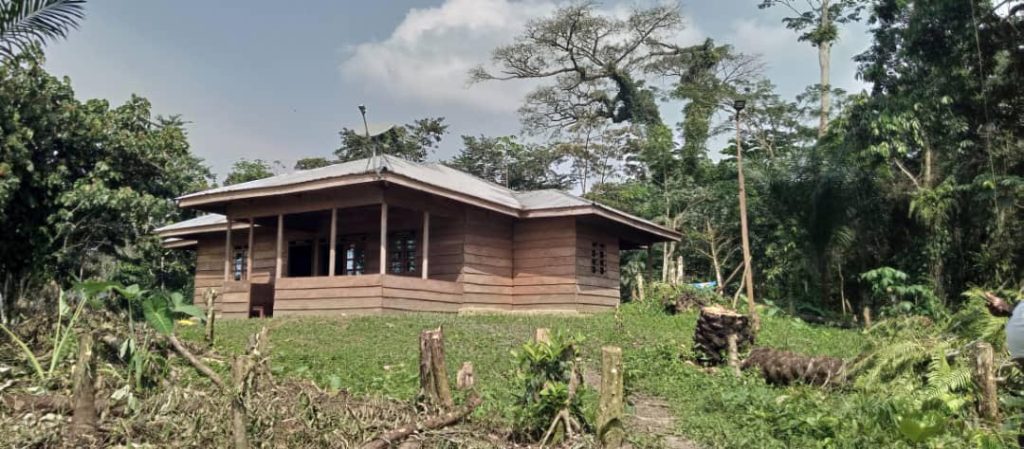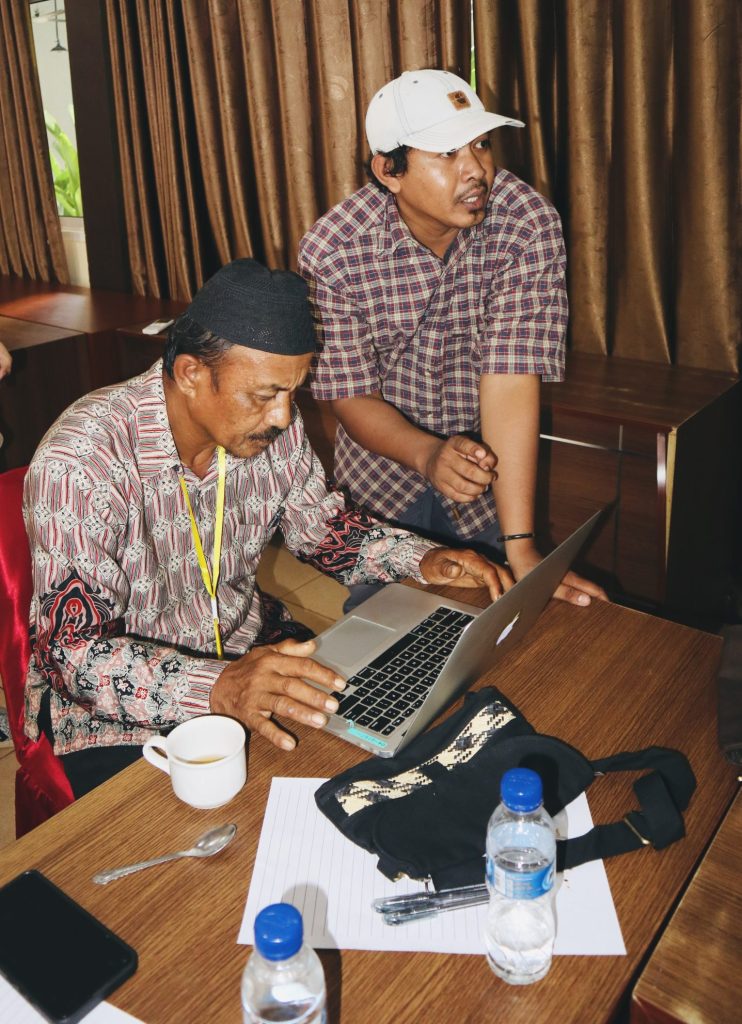Sustaining water through forests
11 October, 2024
Friday 16 february 2024
Header photo: Community-based monitoring on Sulawesi. Credit: NTFP-EP Indonesia.
Community-based monitoring is an approach in which local communities are actively involved in the monitoring or evaluation of projects, programmes or services that directly affect them. The monitoring can be of a certain species, but also of land use, climatic conditions or illegal activities. Innovative technologies, such as GPS, drones, and camera traps, are widely used by communities to gather evidence. The goal of community-based monitoring is to enable communities to obtain information on developments in their landscape. This allows communities to intervene or adapt quickly to changes in their surroundings, whether these be natural or human-induced.
In the Kibu Local Community Forest Concession (LCCF) in the DRC, local communities are monitoring chimpanzees with GPS, climatic conditions with automatic weather stations, and activities that threaten the ecological integrity with a drone. FODI, IUCN NL partner, works in the area to coordinate the monitoring. FODI works in four community forests north of Kahuzi National Park, and covers about 121.000 hectares.
Communities in the area are afraid that they will be expropriated from their land, Maurice Nsase of FODI explains. ‘That’s why we have been helping communities to have ownership of the forest. In 2020, the first 4 communities officially became the owners of their land. Since then, we have set up community-based monitoring programs to help these new land owners keep an eye out for poachers or illegal logging.’

Since the civil war in DRC started around 40 years ago, poaching has increased, Maurice explains. ‘Before the conflict, people didn’t poach big apes, because there was enough game to eat. But now all species are targeted: lowland gorillas, chimpanzees, pangolins. Community-based monitoring is very useful for observing and protecting these animals. In Kibu, they focus specifically on the chimpanzee and track their movements with GPS, and monitor with drones where their nests are. It also has a deterring effect: poachers know there are people looking out for the animals in the forests and stay away.’ And it’s working: as a result of all the work carried out by the communities, the wild buffalo has been observed in Kibu again after a thirty year absence.
The communities also keep an eye out for deforestation. Maurice: ‘Community members track where trees have been cut with GPS. Global Forest Watch then uses this data to spread deforestation warnings. The communities have been crucial in this, because it is quite difficult to gather this type of data in the field.’
In Bolivia, IUCN NL partner CEDIB is resisting the growing expansion of the agricultural sector with the help of community-based monitoring. Soy, corn and cattle are threatening wetland and forest ecosystems in the Laguna Marfil San Ignacio area and pesticides used by agribusiness are contaminating the local water supply. ‘Agribusiness is slowly deforesting more and more parts of Bolivia,’ Miguel Miranda, who works at CEDIB, explains. ‘The San Ignacio area faces a higher rate of deforestation than any other part of Bolivia. But communities living in the area are now actively trying to halt the deforestation there.’
It is important to involve people in the community in this project, Miguel says. ‘People have to know what is going on, it has to be a participatory process.’ Community-based monitoring has allowed these communities to react to the threat of pesticides by taking water samples from streams and analyse themselves which ones have been contaminated in the area. ‘The communities are surrounded by plantations and companies that use pesticides’, Miguel says. ‘They have to know exactly where the water flows and what risk they face with dissolved pollutants. Especially since all the smaller streams end up in the lake.’
Community-based monitoring also helps communities to remain self-sufficient and build sustainable livelihoods through mapping areas where they sustainably manage non-timber forest products, such as wild berries. This designates a purpose to and evident ownership of the land to the communities, which helps to prevent land grabbing and colonisation of the land by agribusiness. ‘The monitoring gives the community a sense of ownership of the land,’ says Celestino, a young leader in one of the monitoring communities. ‘It gives them a push to protect their land, which is absolutely necessary since there are no resources from the government to protect the land. In fact, the government has been actively pushing the expansion of cattle farming. But the communities are now able to stand their ground and protect what is theirs.’
In Sulawesi, Indonesia, IUCN NL partner NTFP-EP Indonesia has set up a community-based monitoring programme used to digitally trace the production value chain of rattan, a type of palm wood. NTFP-EP Indonesia promotes the sustainable harvest of non-timber forest products with communities for their livelihoods. NTFP-EP developed an app for rattan producers and processors to allow traceability to the local levels, so consumers and offtakes, sometimes large internationals, are guaranteed that their rattan has been produced sustainably. This way, communities can be paid a premium for their work.
Rattan has only recently made a return in Indonesia. In 2012, a law was passed preventing the export of raw rattan. ‘Rattan is a cause of deforestation in Indonesia, which is why this law was passed,’ Anang Setiawan, executive director of NTFP-EP Indonesia, explains. ‘The exploitation of the forest was mainly caused by rattan harvesters from outside of the country, who had no traditional knowledge of the forest system and did not recognize traditional land rights. But since then, certifications such as PGS Sustainable Rattan, ROLES (Rotan Lestari) and other more sustainable practices for rattan harvesting have become available. This, together with the results of community-based monitoring, was able to convince the government to allow harvesting of rattan. In 2021, communities on Central Sulawesi began harvesting rattan again.’


NTFP-EP Indonesia is working on making the production of rattan more transparent. Anang: ‘Currently, a website is being developed that directly tracks the production of rattan based on the input data from the app. This website shows how much rattan is harvested, how many farmers are involved, and how much land was used.’
IUCN NL contributes to more sustainable and inclusive management of tropical forests that supports climate mitigation and adaptation, human rights, and the livelihoods of local communities. This is done through the Forests for a Just Future programme, together with local civil society organisations.
‘Community-based monitoring is essential for the Forests for a Just Future project because it actively involves Indigenous Peoples and local communities in the process of monitoring and evaluating,’ IUCN NL senior expert nature-based solutions Maxime Eiselin explains. ‘This way, the project can create solutions to nature-related issues that are in tune with the needs and wants of the local people.’ Community-based monitoring makes the conservation of nature more effective because it enables lobbying for sustainable forest management by holding governments and corporations accountable.